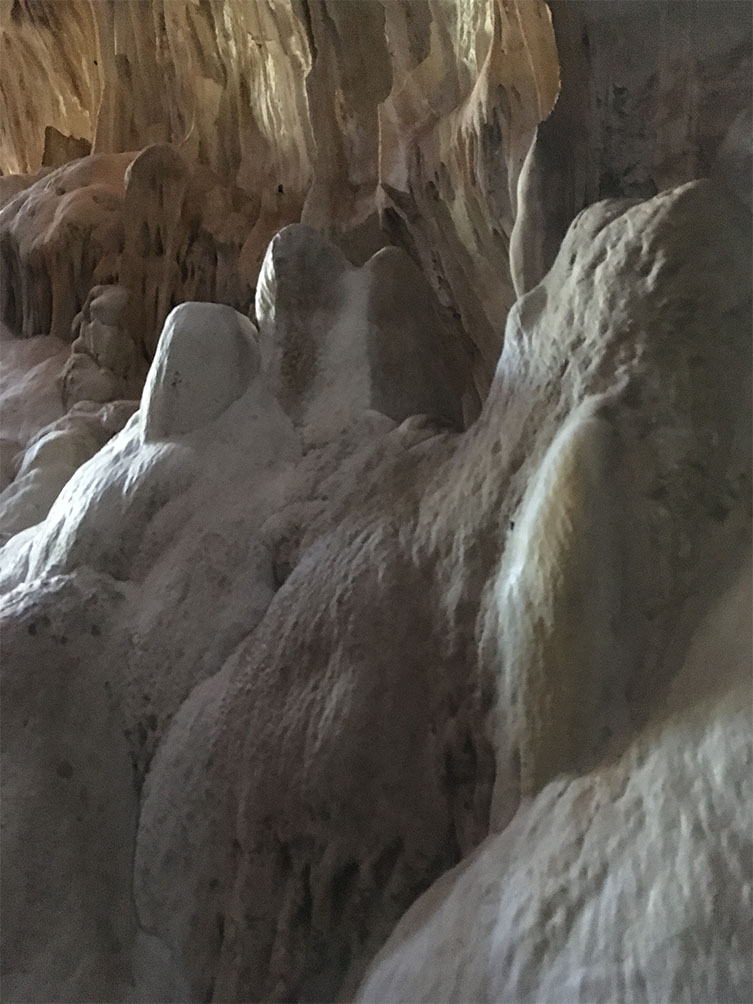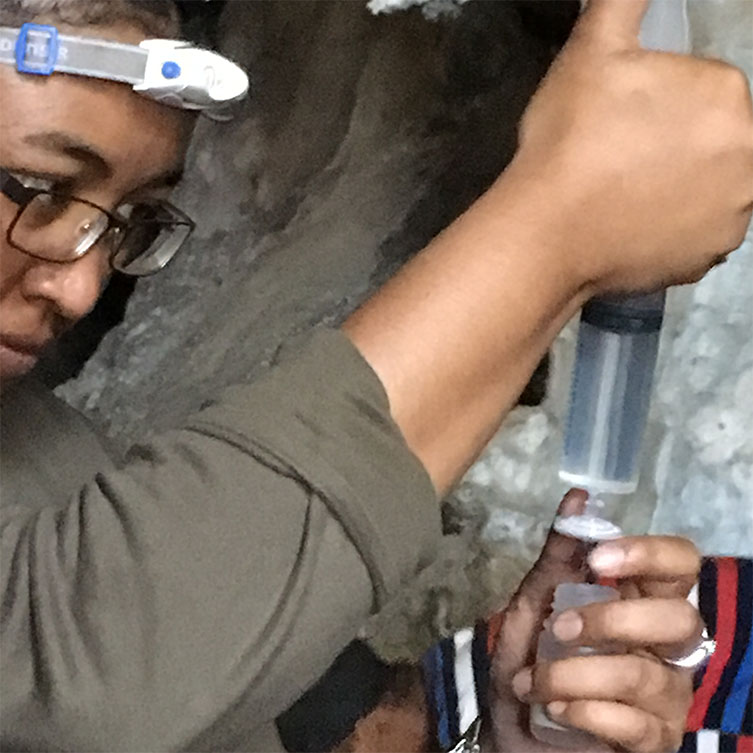Research Published in October 5 Issue of Chemical Geology
Sediments forming in caves, like stalagmites, contain important information about climate and environmental changes over time. Stalagmites, also called speleothems, are the upward growing mounds of sediments in caves.

Scientists were able to extract a tiny, powdered fraction from these stalagmites (with weights ranging from few milligrams to less than 100s of micrograms), analyze them in the lab using sophisticated machines, such as mass spectrometer, and then use the data to understand how our climate and environment changed in the past. For a complete picture, a study of the most recently deposited layers of stalagmite is done.
“Among the information we extracted from these cave sediments, stable isotopes of oxygen (O) and of carbon (C) are the most common and frequently studied,” said Ny Riavo “Voary” Voarintsoa, assistant professor in the University of Houston’s Department of Earth and Atmospheric Sciences.

Denoted δ18O and δ13C, respectively, they represent the calculated values between the heavy and light isotopes (18O/16O and 13C/12C). These values are commonly reported in parts per thousands (‰) in reference to an international standard, Vienna Pee Dee Belemnites (VPDB).
“Despite their strength as a proxy for paleoclimate and paleoenvironment, stalagmite δ13C isotopes are very complicated and quite difficult to study because of their strong sensitivity to various local, regional, and global factors,” Voarintsoa said. “Among these factors, for example, are the rate of degassing inside the cave, the rate of precipitation of calcium carbonates, the changes in vegetation, and the changes in the atmospheric CO2 concentration.”
In the paper published in Chemical Geology, Voarintsoa, with co-author Steffen Therre from the Institute of Environmental Physics of the Heidelberg University in Germany, combined three geochemical proxies to better understand the causal factors of stable carbon isotope changes using modern speleothem carbonates. Geochemical proxies are indicators of past climate and past environmental changes. In this study, they include radiocarbon (14C), δ13C, and elemental content, with a focus on Magnesium (Mg) and Calcium (Ca) concentration.
“One important finding from our research is the clear evidence of the bomb-peak 14C atmospheric signals preserved in the most recently formed samples,” Voarintsoa said. This conclusion was inferred from the high percent modern carbon preserved in these samples. With such information, the team inferred that it is possible to reconstruct past atmospheric 14C concentrations for future efforts in paleoclimate and paleoenvironment reconstruction while using stalagmites.
Voarintsoa and Therre also used a cave-modelling approach to cross-validate the geochemical information that was obtained from the natural environment by studying δ13C, Mg, and Ca. The results suggest that stalagmite δ13C may not always reflect vegetation. Even though “vegetation cover can often display a very clear and different isotopic signal if one considers trees and grasses,” Voarintsoa said.
The data-model comparison shows that stable carbon composition in stalagmites can also change because of the combined effects that occur in the rocks above the cave. Examples include the dissolution of the host carbonate or the reprecipitation of calcium carbonate in the voids and fractures in these rocks, called prior carbonate precipitation (or PCP), and the time needed for the water to percolate down to the cave (which is controlled by the thickness of the rock above the cave) before it reaches the apex of the stalagmites. PCP often occurs in drying climatic conditions.
All these combined could lead to a large isotopic difference (~10 ‰, vs. VPDB), even among contemporaneous stalagmites. These changes reflect the drying climate trend, which is observed in the northwestern part of Madagascar.
“This study further supports that stalagmites are capable of registering changes in the immediate and surrounding environment, and are powerful at predicting changes in climate and environment throughout history,” Voarintsoa said. Those calibrations are needed to validate paleoclimate reconstruction.